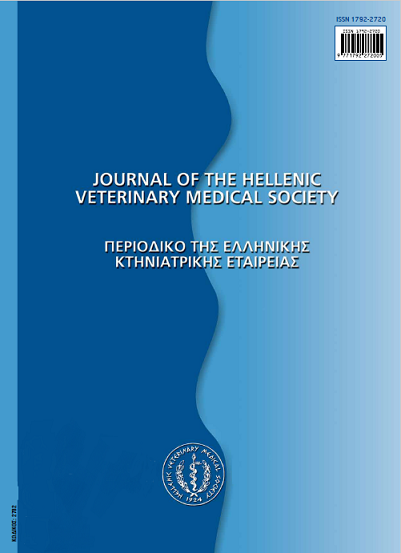Leptospira spp. and Brucella ovis seroprevalence in sheep: preliminary results of one year surveillance program
Abstract
In order to assess the diffusion of brucellosis by Brucella ovis and leptospirosis in sheep flocks in Tuscany, 410 blood samples were collected from males of 76 breeding farms from January to December 2015. All sera resulted negative for B. ovis. A percentage of 17.80% sera was found positive for Leptospira spp. Among all breeding farms, 34.21% resulted positive. The most represented serovars were Pomona (6.34%), Hardjo (4.14%), Grippotyphosa (3.17%) and Bratislava (1.70%). The highest antibody titers were detected for serovar Hardjo (1:25600) and serovars Pomona and Grippotyphosa (1:1600). These results confirm the role of sheep as maintenance host for serovar Hardjo and highlight the spreading of serovar Grippotyphosa in the study area. Constant field investigation, especially on farm animals, could be useful to determine trends and diffusion of some occupational re-emerging diseases, such as leptospirosis.
Article Details
- Zitationsvorschlag
-
BERTELLONI, F., TURCHI, B., CERRI, D., PINZAUTI, P., & FRATINI, F. (2018). Leptospira spp. and Brucella ovis seroprevalence in sheep: preliminary results of one year surveillance program. Journal of the Hellenic Veterinary Medical Society, 68(4), 567–572. https://doi.org/10.12681/jhvms.16053
- Ausgabe
- Bd. 68 Nr. 4 (2017)
- Rubrik
- Research Articles

Dieses Werk steht unter der Lizenz Creative Commons Namensnennung - Nicht-kommerziell 4.0 International.
Authors who publish with this journal agree to the following terms:
· Authors retain copyright and grant the journal right of first publication with the work simultaneously licensed under a Creative Commons Attribution Non-Commercial License that allows others to share the work with an acknowledgement of the work's authorship and initial publication in this journal.
· Authors are able to enter into separate, additional contractual arrangements for the non-exclusive distribution of the journal's published version of the work (e.g. post it to an institutional repository or publish it in a book), with an acknowledgement of its initial publication in this journal.
· Authors are permitted and encouraged to post their work online (preferably in institutional repositories or on their website) prior to and during the submission process, as it can lead to productive exchanges, as well as earlier and greater citation of published work.



